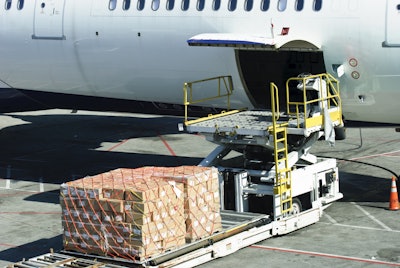
Andrea Gruber of the International Air Transport Association doesn’t like when she hears pharma shippers refer to the airport as “the black box” where you have no idea what is going on with your temperature-sensitive drug shipment.
But the disconnect between shippers, freight forwarders, airport personnel, airline employees, handlers, warehousing and customs all combine to create the perfect storm for air shipments in the “cold chain.”
A bleak picture of the current state of air cargo for pharma cold chain was painted by Marco Bloemen of Seabury, air freight analysts.
When you see a plane you know there is freight in there, but chances are it will be iPhones, fresh flowers or even womens’ fashions. It’s far less likely to be pharmaceuticals.
In fact, of the 21 million tons of airfreight shipped each year, only 500,000 (a half a million lb) is pharma. The dollar value of the shipments may be much higher, but the use of air routes for pharma supply chain movements is in crisis, according to Bloemen.
Even with lower fuel costs, and a slight bump in pharma shipments, air cargo is having a rough time with a 20% decrease in sales.
Pharma shipments by weight peaked in 2011 after a fantastic rise, and have remained flat. Some difference can be found in value of shipments. While ocean is preferred for low-value products (presumably in larger volumes), vaccines still go primarily by air, although even that segment saw a slight modal shift from air to ocean.
IATA view
One audience member blurted out, “Pharma came to air cargo for help and were not treated kindly.” Now airports have invested in dedicated cold chain facilities and are getting certification through GDP’s and IATA’s CEIV (Center for Excellence for Independent Validators) certification.
IATA’s website says, “A concentrated effort to improve the level of competency as well as operational and technical preparedness is urgently required to stop the alarming decline of air cargo’s market share of global pharmaceutical product transport. The industry identified a need to build a network of certified pharmaceutical trade lanes that meet consistent standards and assure product integrity.”
Trouble on the tarmac
There is never a problem outgoing—it’s the destination that can create havoc. Where is my shipment? How long has it been sitting on the tarmac? (The tarmac looms large for pharma cold chain logistics people). To a handler a box is a box. And you can train partners in far away places only to discover six months later a 100% turnover in partners.
Logistics suppliers have been working to alleviate common problems. Christelle Laot from FedEx talked about a passive thermal blanket solution that benefited from some risk analysis. It was determined that human error was the culprit and training was addressed. Handlers were not using correct procedures for wrapping and unwrapping pallets.
Laot also mentioned some of the partners may experience basic literacy issues, really undermining training efforts.
Envirotainer’s Carolina Lundquist presented a case study where temperature monitors were used to determine what effect slight shifts in pallet load during handling could have on air flow. A shift of five centimeters for a pallet full of medicine adversely affected cold chain stability because product shifted to an outer wall. Not only was airflow blocked, warmer temperatures outside heated walls and affected pallet temperatures.
A small wedge of corrugated padding provided stabilization for pallets in the cargo hold and reduced temperature excursions. Envirotainer also addressed the issue of airport handlers not understanding the importance of the shipment. They show actual pictures of patients with a small amount of copy explaining these patients need the drugs in the Envirotainer. To those handlers, a box is more than a box!





















